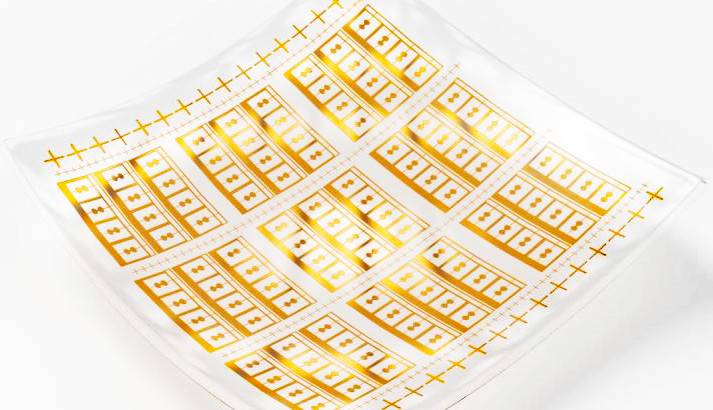Cheap Terahertz sensor built from graphene
November 09, 2017
on
on

Researchers at the Swedish Chalmers University of Technology have developed a new design of terahertz sensor using graphene. The sensor is so flexible it can be integrated into wearable materials. More importantly it can be produced very cheaply and is practically transparent.
This new type of sensor is not just a novelty but could be an important breakthrough allowing many new applications.
The terahertz frequency band extends from 100 to 10,000 GHz. This band is also used by the so-called nude-scanners used at airport check-in desks to look for concealed (plastic) weapons carried by passengers. THz waves penetrate normal clothing and non-metallic weapons do not register on ordinary metal detectors used at the entry gates and by hand-held scanners.
Inexpensive sensors will therefore not only result in lower costs but also improved security for everyone. THz transmissions have lots of potential due to the enormous bandwidth available; THz signals can be used as carriers for high speed information links over short distances allowing data rates up to 100 Gb/s. In the automotive sector, too, THz waves allow visibility unaffected by fog or rain.
There are also medical applications of the technology using sensors that are cheap to produce and are physically small. One example is in the field of dermatology, skin areas affected by cancer have a different reflective index to THz waves which makes the sensor a useful diagnostic tool. THz waves can also be used for the quantitative evaluation of skin burns.
Although research into THz technology has already been ongoing for a long time, conventional THz sensors were always large and expensive. With this new design, the Swedish research team has now broken new ground enabling mass production of the sensors. There should now be nothing to stand in the way of a much wider uptake of the technology. Development of the sensors was funded by the EU under the Graphene Flagship Initiative
This new type of sensor is not just a novelty but could be an important breakthrough allowing many new applications.
The terahertz frequency band extends from 100 to 10,000 GHz. This band is also used by the so-called nude-scanners used at airport check-in desks to look for concealed (plastic) weapons carried by passengers. THz waves penetrate normal clothing and non-metallic weapons do not register on ordinary metal detectors used at the entry gates and by hand-held scanners.
Inexpensive sensors will therefore not only result in lower costs but also improved security for everyone. THz transmissions have lots of potential due to the enormous bandwidth available; THz signals can be used as carriers for high speed information links over short distances allowing data rates up to 100 Gb/s. In the automotive sector, too, THz waves allow visibility unaffected by fog or rain.
There are also medical applications of the technology using sensors that are cheap to produce and are physically small. One example is in the field of dermatology, skin areas affected by cancer have a different reflective index to THz waves which makes the sensor a useful diagnostic tool. THz waves can also be used for the quantitative evaluation of skin burns.
Although research into THz technology has already been ongoing for a long time, conventional THz sensors were always large and expensive. With this new design, the Swedish research team has now broken new ground enabling mass production of the sensors. There should now be nothing to stand in the way of a much wider uptake of the technology. Development of the sensors was funded by the EU under the Graphene Flagship Initiative
Read full article
Hide full article


Discussion (1 comment)